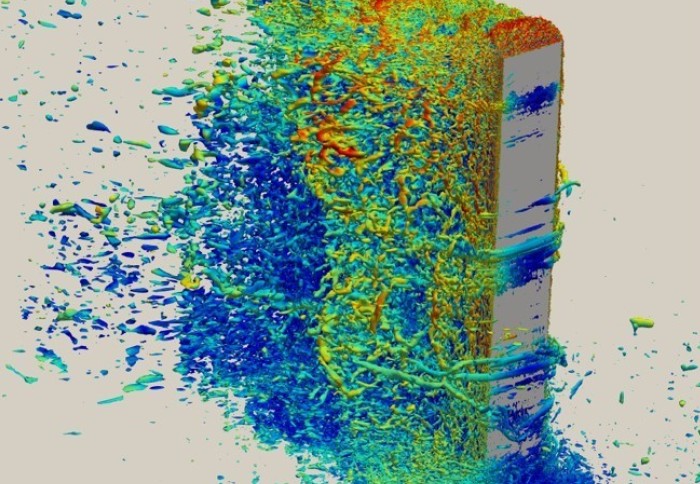Investigating wind forces on high-rise buildings
by Helen Wilkes

Snapshots of Q-criteria iso-surfaces coloured by velocity magnitude showing vortical structures in the flow field
Imperial researchers have partnered with architectural design and engineering company Arup to investigate wind forces on high-rise buildings.
The research was carried out using a next-generation computational fluid dynamics software called PyFR.
One of the highest costs in the building of a high-rise structure is the cladding on the building façade, which must be able to withstand high wind suction pressures.
The research, led by Professor Peter Vincent in the Department of Aeronautics used computer modelling to reproduce recent experimental results, which contained extreme low-pressure events. These modelling results allowed researchers to understand more about the peaks’ size and how they form, and gave insight into the loads placed on high-rise building cladding.
The research was published in the Journal of Wind Engineering and Industrial Aerodynamics.
The work was undertaken in collaboration with the Politecnico di Milano and the Advanced Technology and Research group of Arup UK.
A spokesperson from Arup said:
'This research offers us a glimpse of the future in terms of what can be achieved with numerical simulation of wind loading. Not only does it offer fundamental insights into turbulent structures which have never before been visualised, it provides a benchmark which will help determine what level of fidelity is realistically needed for reliable determination of structural design loads. As such, it represents a key milestone on the road towards safe and informed use of numerical methods within the design process.'
This research was funded by an EPSRC fellowship looking to develop a new software called PyFR that can leverage the capabilities of large computing platforms, including clusters of graphics cards.
Dr Giorgio Giangaspero, who undertook the simulations using PyFR said:
“It was exciting to apply our next-generation CFD tools to a real industrial problem, and even more exciting to see that we were able to reproduce the correct physics, and provide insight beyond that offered by the experiments.”
Article supporters
Article text (excluding photos or graphics) © Imperial College London.
Photos and graphics subject to third party copyright used with permission or © Imperial College London.
Reporter
Helen Wilkes
Faculty of Engineering